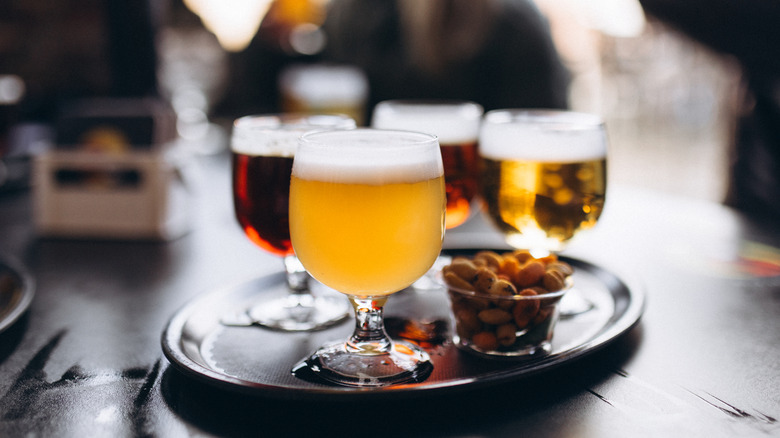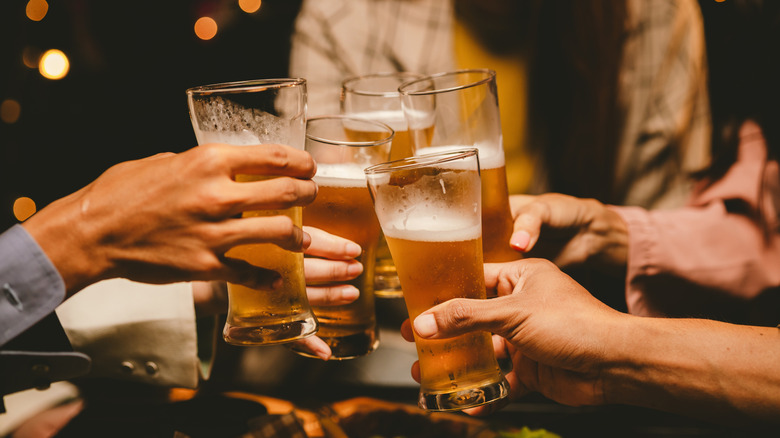What Does It Mean When A Beer Is Dry?
Moisture is, famously, the essence of wetness, and, to further borrow a phrase, wetness is the essence of beer. So how the heck can some beer varieties be categorized as "dry"? Call it a quirk of culinary translation or of language in general, but dry, in this case, actually signals a beer's absence of sweetness, rather than the dry mouthfeel you might get from something like fresh spinach or a hangover. Beer is rendered dry when a larger share of its sugars have been zapped out during fermentation. Ergo, beers that have been fermented for shorter periods are sweeter, and beers that have been fermented longer wind up dry.
Convoluted beverage descriptions are nothing new. Wine is particularly conducive to the blight (anyone up for a glass of seduction with an incongruous patina of ennui?). In fact, wine also follows a similar logic on its own sweet to dry continuum. Take, for instance, the sweetest and driest types of red wine. But beer gets a good head scratcher in there once in a while, too. Dry is a particularly vexing descriptor because of its much more common, and common sense, application with regard to liquids. Crisp might be a more relatable description for most beers labeled as dry, but you can, at least, safely assume that anything denoted as dry won't come off as too sweet.
Dry beer's deeper origins and what you can drink today
Bud Dry, the discontinued beer you forgot Budweiser once made, quickly became the most famous of its kind in the United States. Large-scale production of dry beer had only begun a few years earlier in Japan by the time Bud Dry was introduced in 1989. But, a few weirdly memorable commercials and 21 years later, both the earworm and the suds would be out of circulation. That Japanese antecedent, Asahi Super Dry, however, is still available.
Both "dry" as a broad beer selling point and the wacky catchphrases it wrought have largely faded from the prominence they once commanded, but plenty of brews still fit the bill even without the grating brand campaigns. In our list of lager and food pairings that you need to try, an industry pro names both the brew category and the more precise pilsner as falling on the drier side. Plenty of IPAs and saisons also finish dry, and, should you wish to diverge from beer altogether, ciders are often explicit about where they fall on the sweet-to-dry spectrum.

